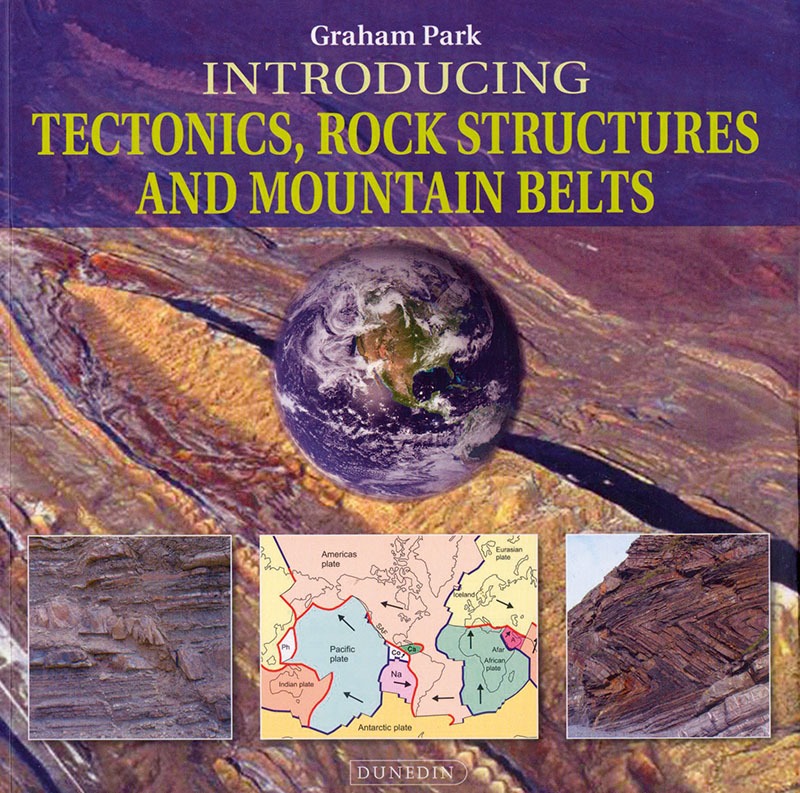Introducing Tectonics, Rock Structures and Mountain Belts
By Graham Park

I have been lucky enough to review several books by Dunedin – the others being on palaeontology, geology and volcanology. And this is as good as the others.
However, Introducing Tectonics, Rock Structures and Mountain Belts is not an easy book to read. The illustrations are, as always, superb – colourful and clear – but this book is more suitable for the more mathematically and scientifically minded, especially those who enjoy the science of engineering. For instance (and inevitably), the first few chapters concern the detailed science of materials (fabrics) and forces, and this means that readers have to get their minds around some occasionally daunting scientific concepts.
On the other hand, it is worth the effort. By the time the guide begins to cover the fascinating topics of current orogenic events (for example, the collision of Africa with Asia, and the resulting growth of the Himalayas) and historical tectonic movements (like the creation of the supercontinents like Gondwana), one is in a much better position to understand both process and specific detail.
Indeed, one of my favourite topics in both geology and palaeontology is the closing of the Iapetus Ocean and its effect on the geomorphology of Scotland, England and Wales (see, for example, Death of an Ocean). Without knowledge of this event, it is impossible to understand why the fossils of Shropshire and the Scottish Midland Valley, while being of the same age, are completely different. The Scottish ones are more like those found in Greenland, because Scotland was connected to this area during the Ordovician before colliding with England and Wales. (The areas separated when the North Atlantic Ocean subsequently opened.)
Having said this, the guide covers much more than just plate tectonics. It also deals with all types of folding, fracturing and deformation of rocks, and with the structural effects of gravity on rock. I prefer fossils to folds, but there is no doubt that the contents of this book are fundamental to geology (and to palaeontology) and are interesting in their own right.
Graham Park is Emeritus Professor of Tectonic Geology at the Keele University and also wrote the companion guide Introducing Geology. That one is a much easier read, but they are both good value as brief guides to fascinating subjects.
Introducing Tectonics, Rock Structures and Mountain Belts, by Graham Park, Dunedin Academic Press, Edinburgh (2012), 132 pages (paperback), ISBN: 978-19-06716-26-4